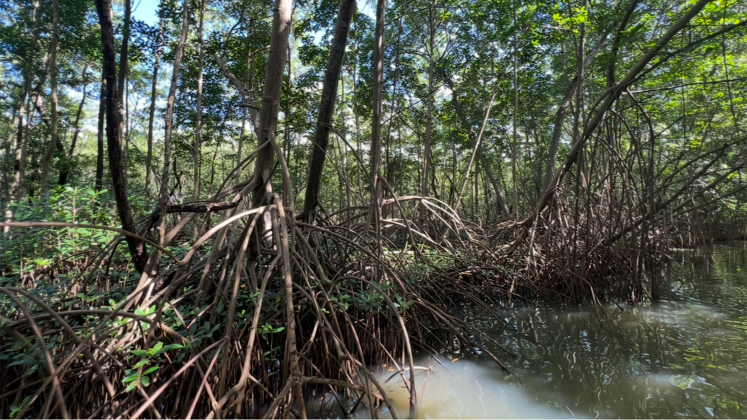Book review by Miriam Aczel
Jon O’Riordan and Robert William Sandford’s The Hard Work of Hope (first published in 2017) is a striking manifesto for climate resilience and social transformation. In a world increasingly destabilized by climatic change, the authors provide a profound exploration of the interconnected crises of water, climate, and energy. Their call to action is not only pragmatic but also deeply reflective, weaving science, history, and policy insights into a narrative that demands urgent attention.

Why This Book is Relevant in 2025
This book’s message has become even more urgent in 2025. Recent extreme events, such as California’s wildfires and South Asia’s severe flooding, underscore the global hydrological destabilization the authors predicted. These crises underscore the increasing frequency of extreme climate events and the pressing need for systemic change in climate governance and adaptation strategies. At the same time, shifting global policy landscapes—including changes in climate commitments among major economies—underscore the importance of localized and community-driven climate action, a core theme of this book. Recent changes in U.S. federal environmental policies have altered climate commitments, raising concerns about how national decisions affect global momentum on emissions reduction and resilience-building. This evolving political and regulatory environment reinforces the importance of localized and community-driven climate action, a core theme of the book.
The Role of Water in a Warming World
Climate change has disrupted the once-predictable hydrological cycle, leading to catastrophic consequences such as prolonged droughts, unprecedented flooding, and widespread water scarcity globally. For example, prolonged drought conditions and record-breaking wildfires in western North America, coupled with devastating monsoonal flooding in South Asia, illustrate their devastating impact on communities, infrastructure, and ecosystems. As the authors observe, “Continuing changes in the composition of the Earth's atmosphere brought about by fossil fuel combustion and other greenhouse emissions, in combination with the reduced capacity of human-altered landscapes to store and absorb carbon, are accelerating the rate and manner of water's motion through the global hydrological cycle.” They emphasize that “[t]he trend toward ever more disastrous weather events and worse droughts will persist until we stabilize the composition of the global atmosphere and restore the stability of the global hydrologic cycle.”
This destabilization is intricately linked to broader Earth system functions, as the authors note: “Our collective cumulative and compound effects on every component of the Earth system, including the global hydrological cycle and the world's climate patterns, appear to have reached a tipping point.” These disruptions transcend national borders, requiring coordinated governance strategies to mitigate cascading risks. Canada serves as a particularly relevant case study in this regard. Though often perceived as a water-rich nation, its long-standing water governance challenges—such as the persistent drinking water crises in First Nations communities—illustrate that water security is a global issue that demands systemic solutions.
Parallels Between Climate Change and the Titanic
One of the book’s most compelling sections draws a powerful parallel between the sinking of the Titanic and humanity’s current trajectory in addressing climate change. The authors argue “... a long series of short-sighted decisions based on greed, arrogance, and wilful denial” led to the disaster.
Similarly, short-term political and economic interests continue to steer us toward climate catastrophe. The fossil fuel industry, depicted as a Titanic-like juggernaut, barrels forward despite clear warnings of escalating climate risks. This theme resonates globally, as seen in the intensification of climate-exacerbated disasters and the continued delay in large-scale climate action. The authors issue a stark warning: “Time is of the essence, however. All realistic analyses…state emphatically that hard decisions must be made now, as it is already too late to achieve the 2°C goal, and the effects of the Anthropocene will just become insurmountable the longer the status quo prevails.”
Hope as Action
Despite their grim analysis, O’Riordan and Sandford emphasize the need for hope--not as a passive sentiment, but as a call to action. They stress that hope must be transformative and action-driven, cautioning against complacent optimism. They write, “Our goal should be to navigate through the Anthropocene toward an exhilarating and exciting transformation of our current economic and social systems into ones in complete harmony with Earth’s natural cycles”.
Their call for integrated water management, including universal pricing, groundwater protections, and ecological flow regulations, reflects the urgent need for systems-based solutions that optimize resource management while mitigating trade-offs.
A Timely and Timeless Manifesto
The Hard Work of Hope is more than a book--it is a moral and scientific imperative. It challenges us to:
- Recognize the interconnectedness of water, climate, and social systems.
- Confront fossil fuel dependency and short-sighted governance.
- Embrace systemic change and local resilience strategies.
The Hard Work of Hope is a poignant reminder that humanity’s survival hinges on recognizing the interconnectedness of water, climate, and social systems. Its critiques of fossil fuel dependency, short-sighted governance, and media distraction resonate powerfully in today’s context of escalating climate extremes.
While the book discusses challenges facing Canada, its insights apply broadly to water and climate crises worldwide. The 2025 intensification of extreme climate events across multiple continents underscores the need for urgent policy interventions. However, as the authors argue, progress requires confronting the structural inequities and entrenched interests that perpetuate environmental harm.
With its vivid metaphors, incisive analysis, and moral urgency, The Hard Work of Hope is both a cautionary tale and a call to action. It reminds us that hope is not passive—it is the determination to build a livable, just, and sustainable world.
As nations—including Canada, the U.S., and others—navigate the intersection of water governance, climate adaptation, and energy policy, The Hard Work of Hope serves as both a warning and a guide. It compels us to embrace the difficult but necessary work of transformation, ensuring that hope is not just an abstract ideal but a catalyst for action.



